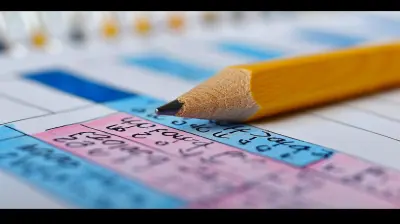2 May 2025
Learning gaps can feel like cracks in the foundation of a student's education. If left unchecked, they grow wider, making it harder for students to reach their potential. That’s where formative assessment comes in—a powerful tool that helps identify and address these gaps before they turn into major roadblocks.
But how exactly do you use formative assessment effectively? In this guide, we’ll break it all down in a simple, easy-to-follow way. From what formative assessment is to the best strategies for closing learning gaps, you’ll walk away ready to make a real difference in the classroom.

What Is Formative Assessment?
Before we dive into techniques, let’s clarify what formative assessment actually is.Formative assessment is an ongoing, low-stakes way to check students’ understanding during the learning process. Unlike summative assessments (like final exams), which evaluate overall knowledge at the end of a unit, formative assessments provide real-time feedback that helps teachers adjust instruction on the fly.
Think of it like a GPS for learning. Instead of waiting until a student reaches the "destination" (final exam) to see if they took a wrong turn, formative assessments help course-correct in real time.
Why Is Formative Assessment Important?
- Identifies learning gaps early- Helps teachers tailor instruction to meet student needs
- Encourages student engagement and self-monitoring
- Creates a more supportive learning environment
By making small adjustments during the learning process, students get the help they need before falling too far behind. 
Effective Formative Assessment Strategies
Now that we know what formative assessment is and why it matters, let’s talk about the best ways to use it in the classroom.1. Exit Tickets
Ever wanted a quick snapshot of what your students understood from a lesson? Exit tickets are simple but effective. At the end of class, students answer a brief question or reflection on a small slip of paper (or digitally).For example:
- What’s one thing you learned today?
- What’s one question you still have?
By reviewing these before the next lesson, you can identify which concepts need revisiting.
2. Think-Pair-Share
This classic technique gets students talking—and thinking—more deeply about the material. Here’s how it works:1. Think – Students take a moment to reflect on a question individually.
2. Pair – They discuss their thoughts with a partner.
3. Share – Pairs share their ideas with the class.
By listening in, you get real-time insights into what students are grasping and where they might be struggling.
3. Quizzes with Instant Feedback
Short, low-stakes quizzes (using tools like Kahoot, Google Forms, or Quizizz) give students immediate feedback. They see what they got right or wrong, and you see which topics need a reteach.4. One-Minute Papers
At the end of a lesson, have students write for one minute about the most important thing they learned and any lingering questions they have. This lets you see what’s sticking and what’s still confusing.5. Student Self-Assessments
Encourage students to rate their own understanding. A simple scale like:- 1 = I’m totally lost.
- 2 = I kinda get it, but need more practice.
- 3 = I feel confident!
This helps them reflect on their learning while giving you a quick way to gauge the class's comprehension.
6. Observations & Class Discussions
Sometimes, the best formative assessment isn’t on paper—it’s in conversation. By listening carefully to student discussions and observing their engagement, you can pick up on where they need extra support.
Using Formative Assessment to Close Learning Gaps
Identifying learning gaps is just the first step. The real magic happens when you act on the data you collect.Step 1: Identify the Gaps
After implementing formative assessments, analyze the results:- Are students struggling with a particular concept?
- Is there a pattern of misunderstanding?
Use the data to pinpoint exactly where students need extra support.
Step 2: Provide Immediate Feedback
Feedback should be timely, specific, and actionable. Instead of saying, "You need to do better in math," try, "I noticed you struggled with dividing fractions. Let’s practice a step-by-step approach together."Step 3: Differentiate Instruction
Not all students struggle in the same way, so personalized support is key. Some ways to differentiate:- Small group instruction for students who need extra help
- Peer tutoring (pairing struggling students with stronger ones)
- Alternative assignments tailored to different learning styles
Step 4: Reteach with a Different Approach
If many students are struggling, it might be time to rethink your approach. Can you:- Use more visuals?
- Incorporate hands-on activities?
- Relate it to real-life examples?
The goal is to make the concept click in a way that resonates with students.
Step 5: Track Progress & Adjust as Needed
Formative assessment is not a one-time thing—it’s an ongoing process. Continue using exit tickets, quizzes, and discussions to see if students are improving. If not, tweak your approach until you find what works.
Common Mistakes to Avoid
Even the best teachers sometimes struggle with formative assessment. Here are a few pitfalls to watch out for:❌ Waiting Too Long to Act
If you spot a learning gap, address it immediately. The longer you wait, the harder it is to correct.❌ Using Only One Type of Assessment
Not all students respond the same way. Mix it up with verbal, written, and interactive methods.❌ Focusing Only on Grades
Formative assessment is about understanding, not just scores. Prioritize feedback and improvement.❌ Overloading Students with Assessments
Keep it brief and meaningful—too many assessments can be overwhelming.Final Thoughts
Formative assessment isn’t just a teaching tool—it’s a game-changer for student success. By using quick, ongoing assessments and adjusting instruction accordingly, we can close learning gaps before they widen.Remember, teaching isn’t just about delivering content—it’s about ensuring that students truly understand and grow. And when we make formative assessment a regular part of our practice, we give every student the best chance to succeed.
So, which formative assessment strategy are you going to try first?








Maria Hill
Formative assessment serves not just as a tool for measurement, but as a bridge to understanding. By continuously engaging with student progress, educators can identify and address learning gaps in real-time, fostering a growth mindset. Ultimately, this approach cultivates resilience and adaptability, essential skills for lifelong learning in an ever-evolving world.
November 10, 2025 at 1:01 PM